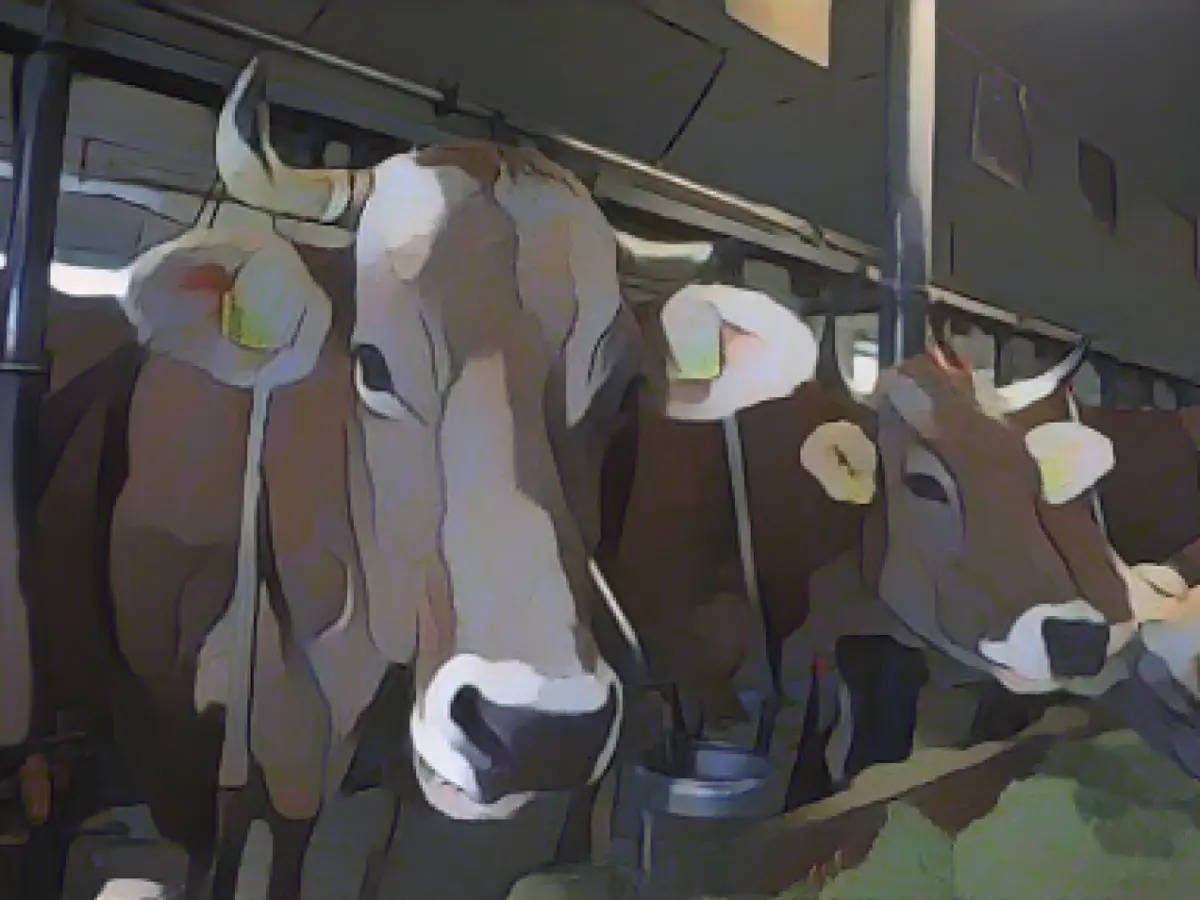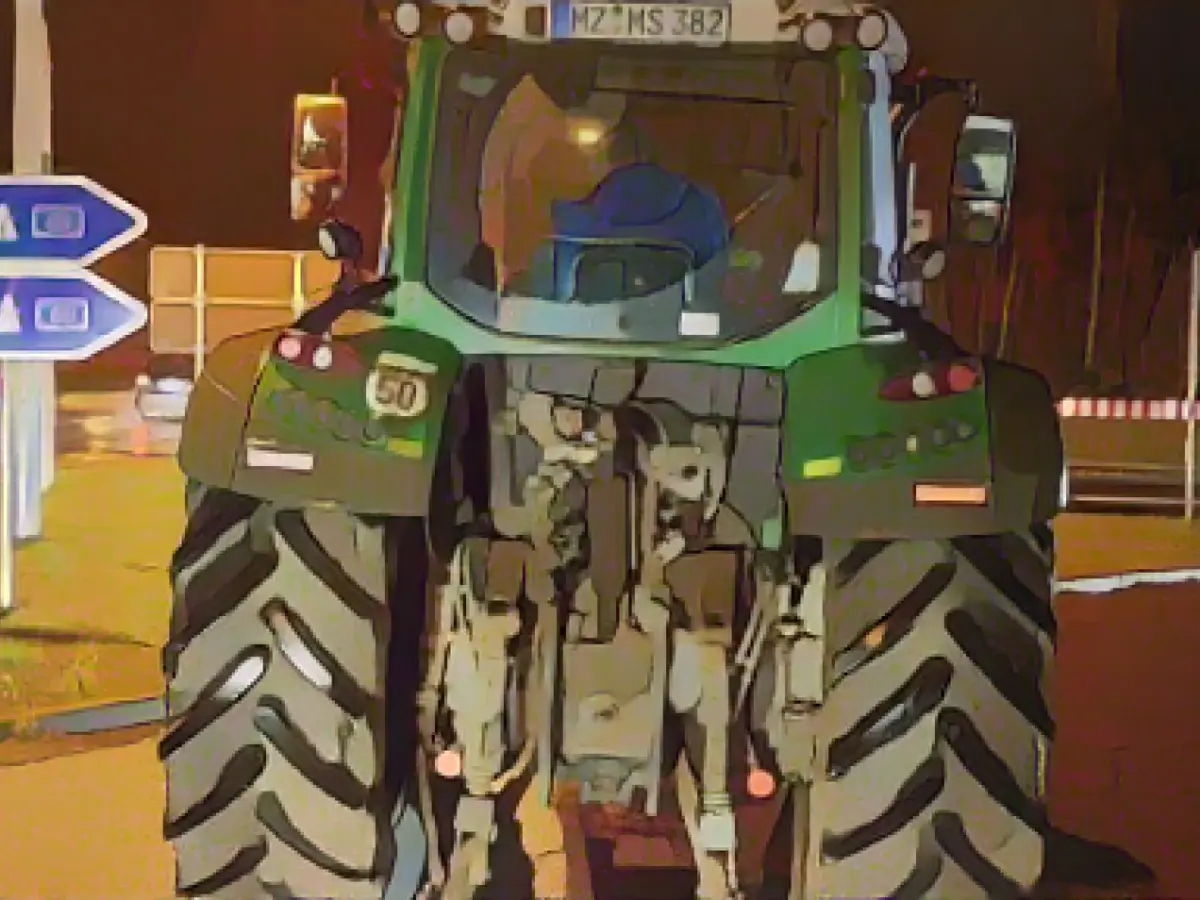Embracing Animal-Friendly Dairying: The Tug of War Between Content Cows and Struggling Farmers
The Bavarian Farmers' Association's website paint a joyful picture of cows grazing on verdant mountain pastures. In contrast, numerous cows in Bavaria endure a cage-bound existence in barns, year in, year out, and never lay eyes on a patch of grass. Encouraged by the Federal Government, dairy farmers nationwide are shifting towards loose housing or combined housing to bid farewell to permanent tethering. However, resistance from Bavaria in the Bundesrat aims to obstruct this shift.
Find out how animal-centered farming practices operate:
Biologist Sabine Dippel from the Federal Research Institute for Animal Health describes a contented cow as one that grooms her coat alongside another cow. This shared grooming brings down the cow's heart rate, making her feel calm and relaxed. "Cows need other cows," stresses Dippel, "They also yearn for social interactions." Just a few weeks post-birth, calves actively seek companionship.
In loose housing, cows can express their natural behaviors. In contrast, tethered stalls may compel them to live adjacent to a fellow cow for the remainder of their lives, which they find uncomfortable. Prolonged immobility can induce behavioral disorders, such as tongue-sticking and rolling – a sure-fire sign of stress, according to Dippel.
Cultivated Landscapes and Combined Husbandry
Approximately 51,000 dairy farms sprawl across Germany, with almost half residing in Bavaria. Nearly 10,000 of these Bavarian farms keep cows in confinement year-round, reports the Bavarian Farmers' Association.
In a conference with the German Press Agency, Federal Agriculture Minister Cem Özdemir (Greens) emphasized that he seeks a deal that aligns the interests of agriculture with those of nature and animal welfare. Despite this, advocates claim that retailers are acknowledging consumers' growing demand for enhanced animal welfare. Regardless, he encouraged broad support to realize a compromise.
Economic Feasibility Concerns
Markus Fadl, of the Naturland association for organic farming, sheds light on the practical challenges. Small farms in densely populated areas often find it challenging to accommodate loose housing systems. Consequently, they may be forced to scale down their herd, which could render the investment economically unsustainable.
The cultivated landscapes and traditional farming structures of the Alpine region would be at risk if these small farms disappear. Fadl asserts, "They play a crucial role in preserving agriculture and the cultural landscape of the region."
Combined husbandry is a suggested compromise, enabling cows to enjoy tethered stalls in the winter months, while permitting them outside during the warmer seasons. However, Ernest Schäffer, from the Bavarian State Board of Trustees of the Producer Rings for Animal Refinement (LKV), shares that farmers located in densely populated areas might experience challenges in convincing their cows to venture outdoors.
Financial Burden of the Transition
Allgäu dairy farmer, Thomas Kögel, an ardent supporter of animal-centered farming, spent an estimated 80,000 euros to construct loose housing for his young cows. Farmers aiming to transition their adult animals face even more substantial costs – potentially reaching up to one million euros, surmises Kögel. Given the prospective generation-long phase, he deems this goal unrealistic.
According to LKV managing director Schäffer, recent construction costs for dairy cattle barns now stand between 14,000 and 20,000 euros to ensure humane conditions, as opposed to the more affordable initial investment of 10,000 to 12,000 euros per cow in caged environments.
The Future of Dairy Farming: A Balancing Act
Just like Allgäu's Thomas Kögel, who is torn between his passion for farming and the financial and regulatory pressures, numerous dairy farmers are grappling with this quandary. Consumers show mixed reactions to the escalating cost of sustainable and organic dairy products. While the majority continues to value animal welfare, a burgeoning economy and shrinking disposable income may hinder widespread enjoyment of these practices.








